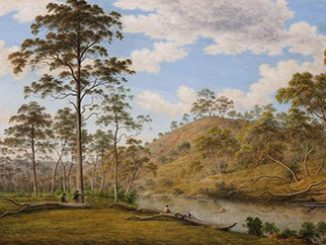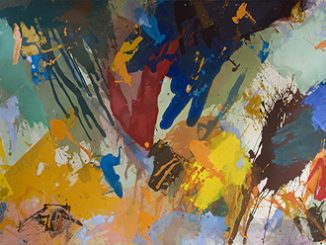 The Art Gallery of South Australia presents its first major exhibition exclusively dedicated to the art of India – Realms of Wonder: Jain, Hindu and Islamic Art of India.
The Art Gallery of South Australia presents its first major exhibition exclusively dedicated to the art of India – Realms of Wonder: Jain, Hindu and Islamic Art of India.
The exhibition features more than two hundred works of art inspired by the three great spiritual traditions of India: Jainism, Hinduism and Islam. From paintings and sculptures to decorative arts objects and textiles, the exhibition spans 1300 years of art making.
On public display for the first time, will be many works of art from the Art Gallery’s holdings as well as works on loan from private collections.
“This exhibition reminds us of the power of art to foster an understanding of the richness and diversity of the world,” says Nick Mitzevich, Director, Art Gallery of South Australia.
“Through the works of art assembled in Realms of Wonder, complex cultures and belief systems will be revealed visually and be made accessible for new audiences.”
Realms of Wonder marks the first occasion in which an exhibition of Indian art, in Australia, has moved beyond a thematic approach, instead presenting the works of art in their sacred and aesthetic contexts.
Curator James Bennett explains “The exhibition, rather than pursuing a specific narrative, juxtaposes works of art to create visual synergies.”
“This approach has presented me with the opportunity to explore the defining elements of each aesthetic while creating an exhibition which is meaningful for broad audiences.”
Visitors to Realms of Wonder will enter the exhibition through a Rajasthani mansion’s monumental, four metre high gateway. Carved in teak, the intricately carved facade is just one of the many architectural forms in the exhibition.
Others include a nine metre long ornately carved colonnade and the 17th century Architectural panel with flowers most likely created by one of the workshops associated with the decoration of the Taj Mahal.
The exhibition also features the first comprehensive survey of Jain art in Australia. Jain works have been largely overlooked by Australian collecting institutions, in part because of their fragility and limited availability for display.
Bennett attributes the Art Gallery’s rich collection to its Chairman, benefactor and connoisseur of Jain art, Michael Abbott AO QC whose, generous contributions have made possible the inclusion of Jain art in Realms of Wonder.
Realms of Wonder features an extensive selection of Jain manuscripts that testify to the great heritage of Jain graphic arts. One of the highlights is Invitation letter to a Jain monk, dated to November 1795, which was created in Surat, India.
Scholar Nalini Balbir (University of Paris, Sorbonne) has described this letter as ‘among the most valuable representatives of the genre known to date.’
The Hindu works of art in Realms of Wonder testify, through subject and style, to south Asia’s engagement with Britain. These works, as explained by Bennett, “recognise that India and Australia, both as former British colonies, share parallel histories.”
One of the works that is most emblematic of that shared history is Presentation tankard created by George Gordon of Scotland who supplied silver and luxury goods in Madras in the 18th century.
Presentation tankard appears to be the earliest dated example of Ango-Indian silverware. The tankard was given to Lord Cornwallis, then Governor General of India, whose previous career included the 1781 surrender of the British forces under his command at Yorktown, Virginia, which concluded the American War of Independence.
The Islamic works of art in Realms of Wonder feature some of the first acquisitions of Indian art made by the Art Gallery. The development of the Indian collection commenced in 1939 with a group of seventeenth to early-nineteenth century miniature paintings, including Portrait of Dara Shikoh as a teenager.
Today the Art Gallery maintains the only permanent space in Australia dedicated to the display Islamic art. The Islamic display features a finely embroidered shawl with bhuta patterns, or ‘paisley’ in English, which was created in Sind, Pakistan, a region made famous for embroidered textiles.
The shawl was collected by the grazier and pioneer Samuel Stuckey during his travels to British India for the negotiation of importing camels and their drivers to South Australia in the nineteenth century.
Realms of Wonder: Jain, Hindu and Islamic Art of India
Art Gallery of South Australia, North Terrace, Adelaide
Exhibition: 19 October 2013 – 27 January 2014
Free entry
For more information, visit: www.artgallery.sa.gov.au for details.
Image: Krsna and R?dh? on the Yamuna River, early 20th century, Kishangarh, Rajasthan, India, opaque pigment, gold, silver and mica shellac paint on cotton, 231.0 x 254.0 cm; Van Dam Bequest Fund 2012, Art Gallery of South Australia, Adelaide



